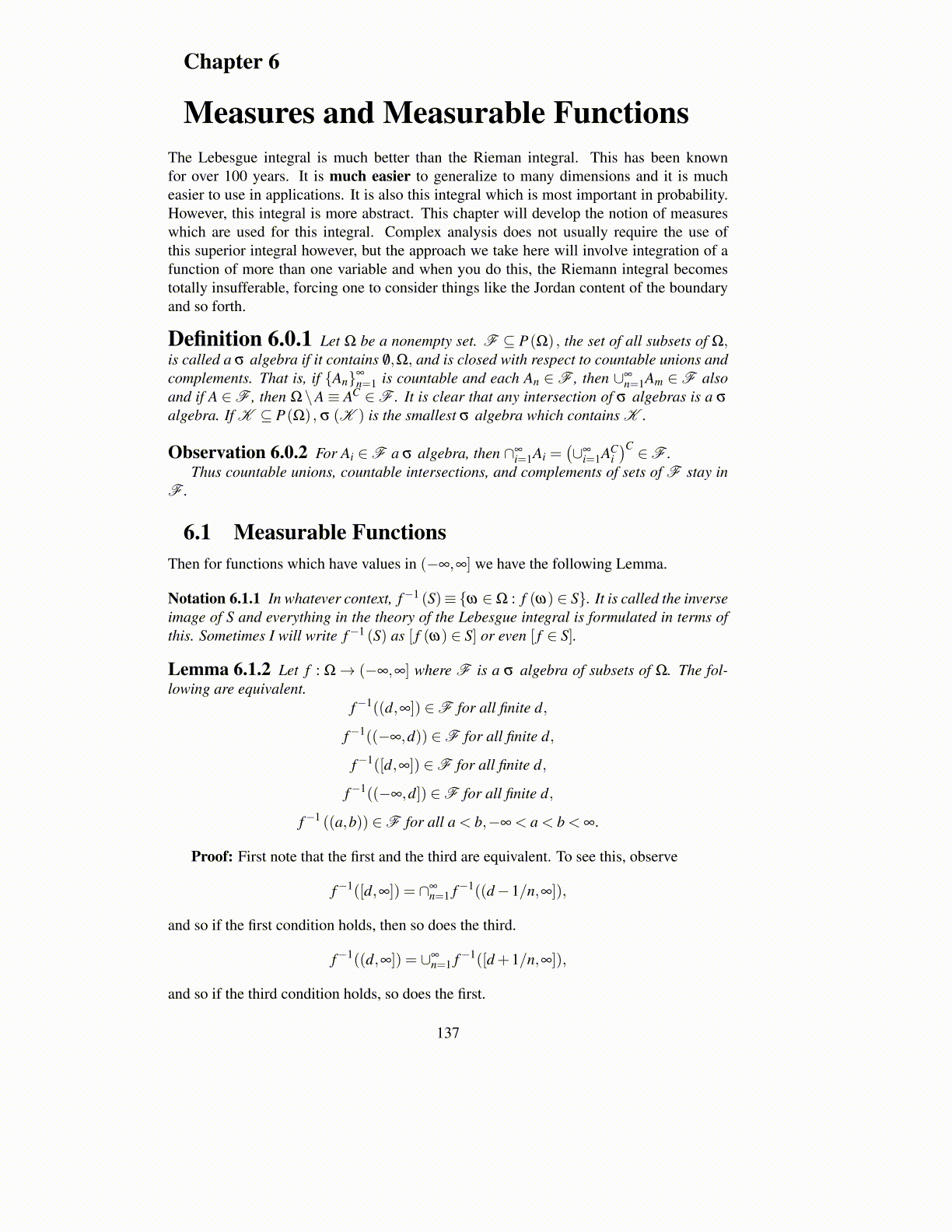
Chapter 6
Measures and Measurable FunctionsThe Lebesgue integral is much better than the Rieman integral. This has been knownfor over 100 years. It is much easier to generalize to many dimensions and it is mucheasier to use in applications. It is also this integral which is most important in probability.However, this integral is more abstract. This chapter will develop the notion of measureswhich are used for this integral. Complex analysis does not usually require the use ofthis superior integral however, but the approach we take here will involve integration of afunction of more than one variable and when you do this, the Riemann integral becomestotally insufferable, forcing one to consider things like the Jordan content of the boundaryand so forth.
Definition 6.0.1 Let Ω be a nonempty set. F ⊆ P(Ω) , the set of all subsets of Ω,is called a σ algebra if it contains /0,Ω, and is closed with respect to countable unions andcomplements. That is, if {An}∞
n=1 is countable and each An ∈F , then ∪∞n=1Am ∈F also
and if A ∈F , then Ω\A ≡ AC ∈F . It is clear that any intersection of σ algebras is a σ
algebra. If K ⊆ P(Ω) , σ (K ) is the smallest σ algebra which contains K .
Observation 6.0.2 For Ai ∈F a σ algebra, then ∩∞i=1Ai =
(∪∞
i=1ACi)C ∈F .
Thus countable unions, countable intersections, and complements of sets of F stay inF .
6.1 Measurable FunctionsThen for functions which have values in (−∞,∞] we have the following Lemma.
Notation 6.1.1 In whatever context, f−1 (S)≡{ω ∈Ω : f (ω) ∈ S}. It is called the inverseimage of S and everything in the theory of the Lebesgue integral is formulated in terms ofthis. Sometimes I will write f−1 (S) as [ f (ω) ∈ S] or even [ f ∈ S].
Lemma 6.1.2 Let f : Ω→ (−∞,∞] where F is a σ algebra of subsets of Ω. The fol-lowing are equivalent.
f−1((d,∞]) ∈F for all finite d,
f−1((−∞,d)) ∈F for all finite d,
f−1([d,∞]) ∈F for all finite d,
f−1((−∞,d]) ∈F for all finite d,
f−1 ((a,b)) ∈F for all a < b,−∞ < a < b < ∞.
Proof: First note that the first and the third are equivalent. To see this, observe
f−1([d,∞]) = ∩∞n=1 f−1((d−1/n,∞]),
and so if the first condition holds, then so does the third.
f−1((d,∞]) = ∪∞n=1 f−1([d +1/n,∞]),
and so if the third condition holds, so does the first.
137